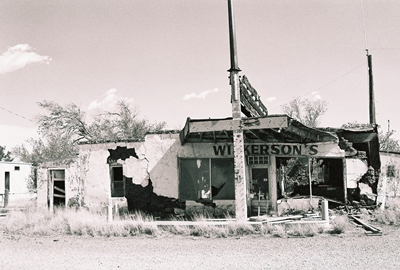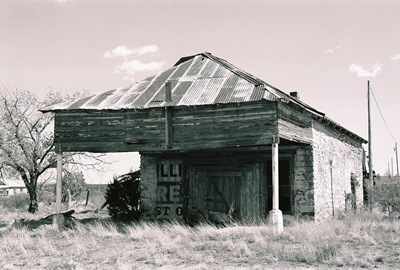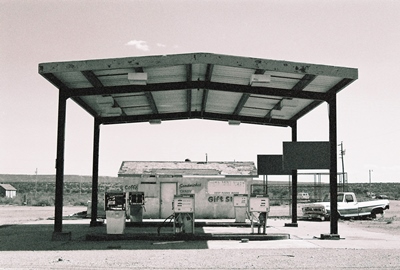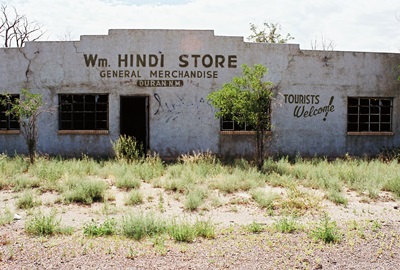
Someday I’ll tell you a tale of a town that didn’t owe its very existence to the railroad, whose citizen’s livelihoods weren’t later subject to the capricious placement of state and federal highways, and which didn’t finally find itself cut-off from the travelers that were its lifeblood. But it ain’t gonna be the story of Duran.
In February 1902, the El Paso & Northeastern Railroad finished the “Arrow Route,” a stretch of track between El Paso and Santa Rosa, where a connection to Leadbelly’s Rock Island Line awaited. Blas and Espiridón Durán, two brothers, owned wells in central New Mexico which could provide water to railroad work crews. So, the railroad built repair shops and even a wooden roundhouse in what became Duran. The railroad also turned the town into an important supply point for area ranches virtually overnight. Duran’s population probably peaked shortly afterward at 300 or so.
But the railroad eventually moved its operations south to Carrizozo and the roundhouse came down in 1921. Yet Duran remained important to ranchers and, when two-lane U.S. Highway 54 came right through the heart of town in the 1930’s, the increased flow of north-south traffic gave Duran another boost. This lasted until the 1960’s, when I-25 was constructed about 60 miles west, strangling U.S. 54 of travelers.
Duran is not a true ghost town. It still has residents--probably around 35, in fact--but two of its most interesting buildings are long-abandoned. One, shown below, is a two-story building made of buff-colored sandstone marbled with white. This was a general store and hotel. Badly faded lettering above the doors reads: “dry goods furniture hardware grocery & feed’s”. It’s still a beautiful building whose quaint façade belies a sinister and surprising history.
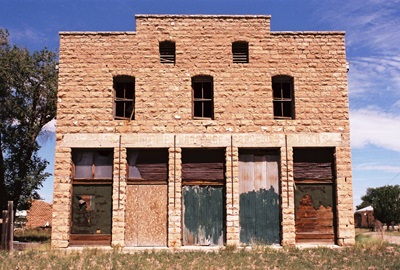
The building was owned by Anton J. Coury, a man of Lebanese descent, who lived with his wife, Raffa, and children, Fred, Anna, and Emma, in the upstairs hotel. On September 3, 1921, the store was robbed by five men and Mr. Coury was shot and killed while resisting. Raffa was also shot and severely wounded, reportedly surviving only because a potentially lethal bullet struck the metal clasps of her corset and was deflected. Young Freddy then bravely intervened, driving away the thieves by relentlessly pelting them with canned goods when their gun jammed. I don’t know if the store ever opened for business again.
A search for the killers began immediately and Francisco Vaisa, Isodoro Miranda, and Carlos Rentenería were quickly caught. Luis Medrano was apprehended some months later. The fifth man, Eziquel Machucha, was never found and it’s believed he escaped back into Mexico.
The prisoners were sentenced to be hung on July 28. 1922, but Vaisa appealed his conviction and bought himself some time. On the appointed day, in Estancia, about 40 miles northwest,
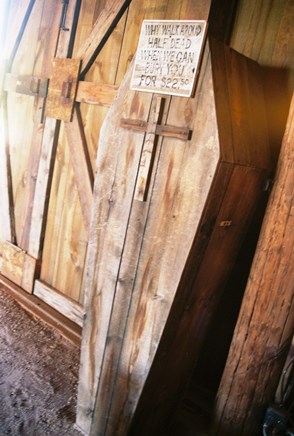 with Mrs. Coury and her children observing, the other three men were brought to the scaffold as the sun rose in the east. Asked for final statements, Rentenería said a few unrecorded words and Medrano said nothing. But Miranda said, “In New Mexico, there is no justice for the poor man. He is led like a helpless lamb through the courts and to his punishment. This is an injustice you are now doing.” Then Sheriff John Block led the men behind a canvas drape, the low sun casting stark silhouettes against the fabric. The day broke in earnest as the men dropped to their deaths.
with Mrs. Coury and her children observing, the other three men were brought to the scaffold as the sun rose in the east. Asked for final statements, Rentenería said a few unrecorded words and Medrano said nothing. But Miranda said, “In New Mexico, there is no justice for the poor man. He is led like a helpless lamb through the courts and to his punishment. This is an injustice you are now doing.” Then Sheriff John Block led the men behind a canvas drape, the low sun casting stark silhouettes against the fabric. The day broke in earnest as the men dropped to their deaths.It didn’t take long for Vaisa’s conviction to be upheld and, on April 6, 1923, he, too, was brought to the gallows in Estancia. With few observers and after offering that he had no final statement to make, John Block adjusted Vaisa’s noose, the trap door opened, and Vaisa fell as the sun again crested the horizon. He was the 75th and last person to be legally hanged in New Mexico.
Here at City of Dust we like to get our facts straight, which is difficult with the internet around. The more commonly cited story of the above attack includes four robbers striking in the dead of night, with three men being hung and the fourth getting the electric chair. Also, the robbery occurred in 1914. Is the devil in the details? Well, the story I recounted is clearly better and, while I wasn’t there, that version is from “Myth of the Hanging Tree: Stories of Crime and Punishment in Territorial New Mexico,” by former New Mexico State Historian Robert J. Torrez. Mr. Torrez cited contemporaneous editions of the Estancia News-Herald and seems pretty reliable to me.
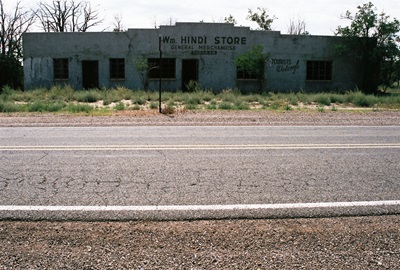
In any case, William Hindi was also from Lebanon and operated a store in Duran, the eye-catching building above and at top, which opened in 1908. It is also constructed of cut stone and its signage still clearly welcomes tourists, but much in the world has moved on while the little store has stood still. At least the graffiti inside, some of which reads, “go hug someone,” “god rox,” and “satan is gay,” would lead one to envision a history far more whimsical than that of the general store. William's brother, Kasim, also operated a store, but his was across the highway from the Coury Merc. Co.
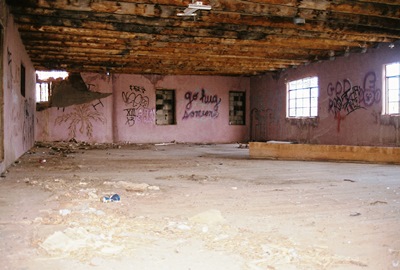
Other buildings around Duran are still in use, including the San Juan Bautista Catholic Church, built in 1910, the red brick school, which closed in 1955 but has been re-purposed as a community center, and the fire station and post office. Thus, unlike some other towns where the trains now whistle right by and motorists are few and far between, Duran persists. It also most certainly sees fewer hanging crimes.
The jumbled tale of the robbery of the Coury family may have originated with a resident of Duran and is retold at ghosttowns.com. To read the more academic version, see Torrez. There is also an odd tale of a boy from the East Coast hitchhiking back to Duran in the 1960’s and starting a life. And that’s everything I could find about Duran. Oh, and the shot of the coffin is from Apacheland Movie Ranch in AZ, not Duran.
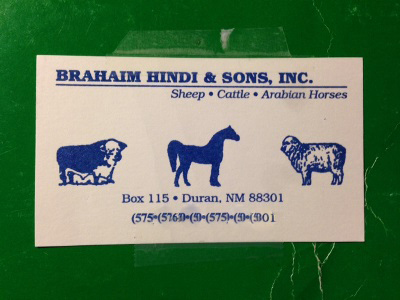
APRIL 2014 UPDATE: I received a very interesting message regarding the Hindi's from Tere O., who has kindly agreed to allow me to post it here. Some of you with roots in Duran might find this of particular interest. Thanks, Tere!:
"Wow, I wish you could have visited with Brahaim Hindi (card above). He lived in Duran and would have been a lot of help with information. Somehow I want to say he has a brother named William but I’m not sure. I’m trying to recover information about Duran for my family that is growing up and they are interested in our history.
"We went to see Brahaim Hindi about a year ago. My mom knows him very well. My Aunt Sara worked for the Hindi’s for years in Duran. She helped raise the children, too. My mom, Agneda, is living with me now but she has dementia and cannot remember much. However, she knew that Brahaim lost his wife and son on the same week and wanted to pay her respects to him so I took her to his house to see him.
"Now he has become quite ill and is living here in Albuquerque with his daughter, or so I hear. I live on the same street as Apolonio S. and his wife, Sandra. He was the postmaster in Duran. I am the granddaughter of Simplicia and Lazaro Montoya. I just posted the coat of arms of the Montoyas on my Facebook page yesterday.
"Hope this info helps you on the journey you have to keep all of us informed."
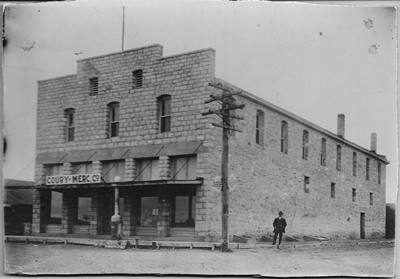
APRIL 2014 UPDATE: After the update a few days ago from Tere O. we get another, this time from S. Hindi, who clears up the picture of Duran, the Hindi family, and who owned (or owns) what store entirely. We also get a great photo of the Coury Merc Co. Incredibly, that is Anton Coury standing at the side. Here is the story:
"The picture (above) is of the Coury Mercantile/boarding house with Anton Coury out front. My husband, Joseph Hindi, bought this building from Raffa Coury, widow of Anton who was shot inside. I have a lot of info on the shooting.
"Also, the William Hindi building across the street was owned by my husband's uncle, Brahaim. William is Brahaim’s uncle. William and Alex Hindi came from Lebanon. The town, Duran, is named after my husband’s grandmother's family. Alex married Clarita Duran and had Brahaim, Sam, Nabay, Shafie, Ednen, Samia, and Hafiza. Shafie is my husband's father.
"Alex became a rancher/Arabian horse breeder and William had the store. Kasim also had a store and is related. There are lots of Hindi’s from Duran. All related. You need to talk to my husband because I may have some of the connections wrong. I’m trying to write a screenplay on the shooting in Duran."
That's an impressive summary. Many thanks for straightening all that out, S. Hindi! Your contribution is very much appreciated. And I really look forward to hearing more about that screenplay. JM
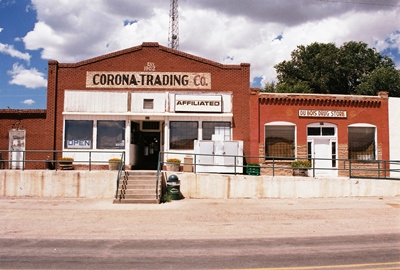
MAY 2014 UPDATE: W.B. Hindi recently sent me a message adding even further detail to this story, particularly William Hindi's background before he opened his store in Duran. Mr. Hindi kindly agreed to have his recollections posted here for all to read:
"I came across your blog on the internet concerning my grandfather’s store in Duran, N.M. My name is W.B. Hindi. My grandfather’s name was Milhelm Hindi, which he changed to William sometime after he arrived here from Lebanon at the turn of the 20th century. When he first got here he actually sold goods out of a buckboard. He sold them in Northern N.M. and into Southern Colo. He bought them from the grandfather of the Maloofs who at one time owned Coors distributing in Albuquerque N.M. I have a picture of him on horseback in front of the Maloof store in Las Vegas N.M.
"His brother, who people are calling Alex, was actually named Ali. William brought Alex over to become his partner in the sheep and cattle business. Since they settled in Duran, which bordered Lincoln County, shortly after the cattle wars of Billy the Kid fame, this may have been the reason he elected to raise both sheep & cattle. He also started breeding Arabians for ranch work and would often take a few along into northern N.M. to sell. There are books that I believe Brahaim has that trace many Arabians in this country back to their heritage from The Hindi Ranch.
"I am still picking my uncle's brains to get more of our history while I can. I am going to forward your blog to my Uncle Azeez and he may possibly be able to fill in some more gaps."
Those are some great pieces to have added to the picture and we're beginning to learn a lot about the origins of the store at the top of this post. Many thanks to W.B Hindi for being so helpful and generous.
By the way, the Corona-Trading Co. and Du Bois Drug Store, shown at the top of this update, aren't in Duran, but Corona, which you'll find a few miles to the southwest on Highway 54. Established in 1902, six years before the Wm Hindi Store, I imagine the Hindi family would've known the Corona-Trading Co. well (and perhaps still do!).
JULY 2014 UPDATE: I'm sorry to report that the Corona-Trading Co., pictured just above and now shown just below, in operation since 1902, has recently closed. Hopefully, I'll be able to do a full post on Corona, NM someday, but, for now, here's to hoping someone buys the old trading company and starts watering those flowers again soon.
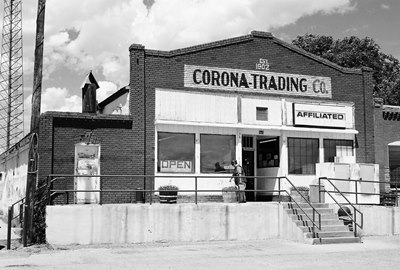
JUNE 2015 UPDATE: I received a great historic photo from W.B. Hindi which, while not specifically of Duran, is certainly Duran-related. I'll let Mr. Hindi explain further (see MAY 2014 UPDATE for more from Mr. Hindi, including a reference to the shot below):
"This is a picture of my grandfather, William (Milhelm) Hindi, loading supplies in 1910 in Las Vegas, NM. He is the gentleman on horseback. I think this is a great photo as it mixes the old (wagon and horses) with the new (motorcycle). I just wish I knew more about it. What is really neat is that Maloof's store was owned by the grandfather of the Maloof's from Albuquerque, whose dad built a small liquor store up into the largest Coors distributorship in the Southwest."
Thanks for the rare and wonderful photograph, Mr. Hindi!
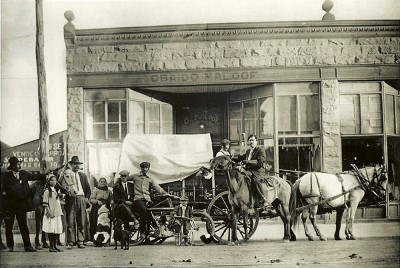
JULY 2015 UPDATE: Below is another wonderful vintage photograph, this one from N.E. Welch. According to the labels on the picture, it depicts the wedding of Mrs. Dan Kelly (far right; née Nova Simpson), occurring in December 1910. Other women in the photo are Mrs. A.E. Simpson (center, in black), Miss Alia Blair (second from right), and Miss Myrtle Estus (far left). The drug store/post office and Duran Eating House, which the Simpson family operated, were on the north side of the railroad tracks, just west of the Coury Merc Co. One of the Simpson children, William, or "Bill," was sheriff of Luna County when Pancho Villa made his raid on Columbus, NM. Note the snow on the ground. The original photo was donated to the Museum of New Mexico in Santa Fe by Mr. Welch's older brother.
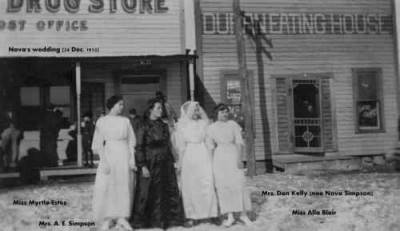
NOVEMBER 2015 UPDATE: Ian Wheeler of Australia has graciously submitted a couple photos from his trip through Duran in the mid-1990's. The first shot is of the mysterious Kasim's Cash Store in all its still-signed glory, complete with vintage gas pump. William, who owned the general merchandise store at the top of this post, was the brother of Kasim's mother and thus Kasim's uncle. Kasim's Cash Store still stands, but has been painted over and is therefore harder to identify, not to mention less interesting. Now we've got photographic evidence of both stores as they were and the full story of just who owned which. The second photo is obviously of the Coury Mercantile Company, but with its doors and windows in rather more authentic condition.
Many thanks to Mr. Wheeler for digging these out and passing them along!
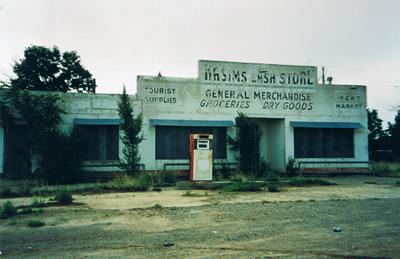
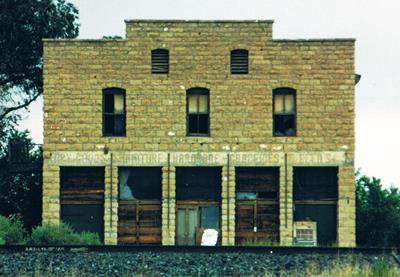
JANUARY 2016 UPDATE: What we have below is a Tokheim 39 gas pump that was made in November 1946 and was once somewhere in Duran. It was purchased in Alamogordo, NM in 2015 and is now in Germany, believe it or not. As you can see, it still has the original Conoco design. If anyone remembers where this pump used to be located (or perhaps even has a photo of it!), please leave a comment below. Both its current owner and myself would love to know! It's a nice one, eh?
Thanks to Bernd for submitting this little bit of Duran highway history.
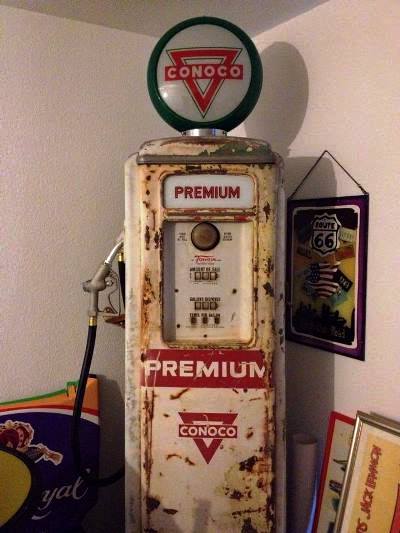
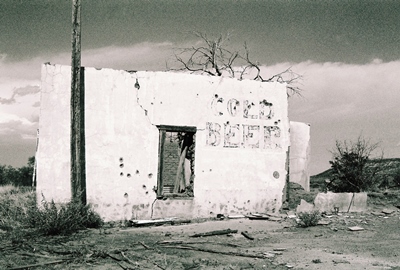
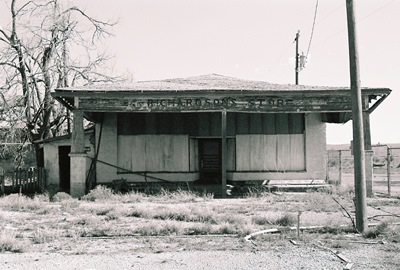
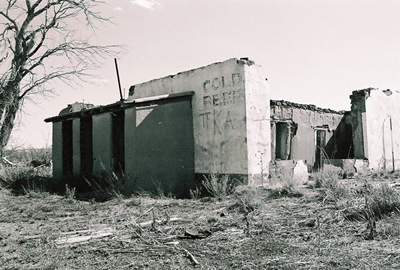

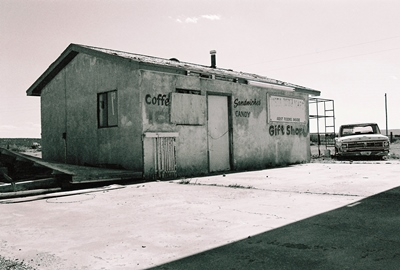
 The name was later changed to Newkirk, in honor of a
The name was later changed to Newkirk, in honor of a 